Seventh Seal, The (1957)
“A man must live — at least until the plague takes him.”
|
Synopsis: |
|
Genres:
Response to Peary’s Review: Peary points out that Bergman’s film — based on his own one-act play — is “very theatrical, with roots in Shakespeare, absurdism, farce, and medieval mystery and morality plays”; and, “as in all Bergman classics, there are strong acting, stunning photography (by Gunnar Fischer), many unforgettable images (the chess match for Von Sydow’s life, the burning of a witch, the final dance of Death and his victims), and questions left for us to answer for ourselves” (“What will become of us who want to believe, but cannot?”). While Peary argues that Bergman posits “life can be satisfying and safe only for those simple people who have faith, no questions asked”, this is a film filled with questions (“You play chess, do you not?” “Why make them happy? Why not scare them?”) and not all those who fail to ask questions are as content as Poppe’s idyllically happy young family. Indeed, the world on display here, geographically beautiful while existentially horrific, is miserable, with people making sense of senseless chaos in whatever ways they can and will — from burning a young woman (Maud Hansson) as a witch, to parades of self-flagellation, to rape and adultery, to distraction through entertainment, to barroom brawls, to intense religious faith. While the story-line is deeply provocative — and all too eerily fitting for our current times — it’s the potent imagery throughout The Seventh Seal (the title is drawn from a Bible verse from The Revelation of St. John the Divine, read both during the opening shots and by Landgre in a later scene) that lingers in one’s memory. Though theatrical in some ways, the film is also highly cinematic: Fischer’s cinematography is consistently gorgeous, and he and Bergman make excellent use of outdoor sets, especially during opening scenes shot at Hovs Hallar. Bergman was apparently inspired by Kurosawa’s films, though he “based the entire iconography of the movie on murals in a church where his clergyman father used to go and preach”, and the scene of Von Sydow playing chess with Death was inspired by a medieval painting by Albertus Pictor. Thankfully, this thematically heavy foreign film has numerous moments of comic levity and a “semi-optimistic ending”; now, more than ever, this movie should be seen and discussed by all film fanatics. Redeeming Qualities and Moments:
Must See? Categories
(Listed in 1001 Movies You Must See Before You Die) Links: |

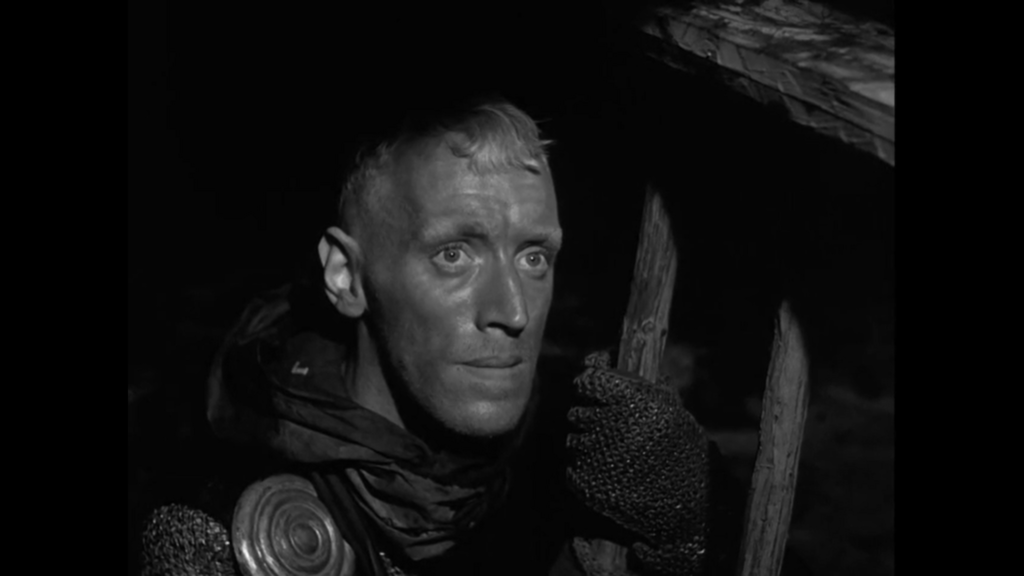
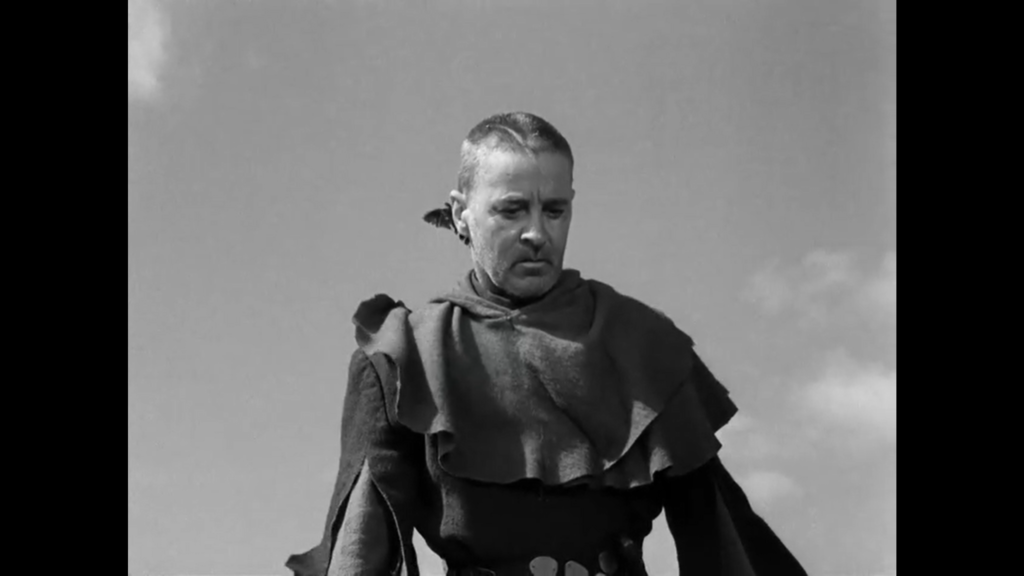
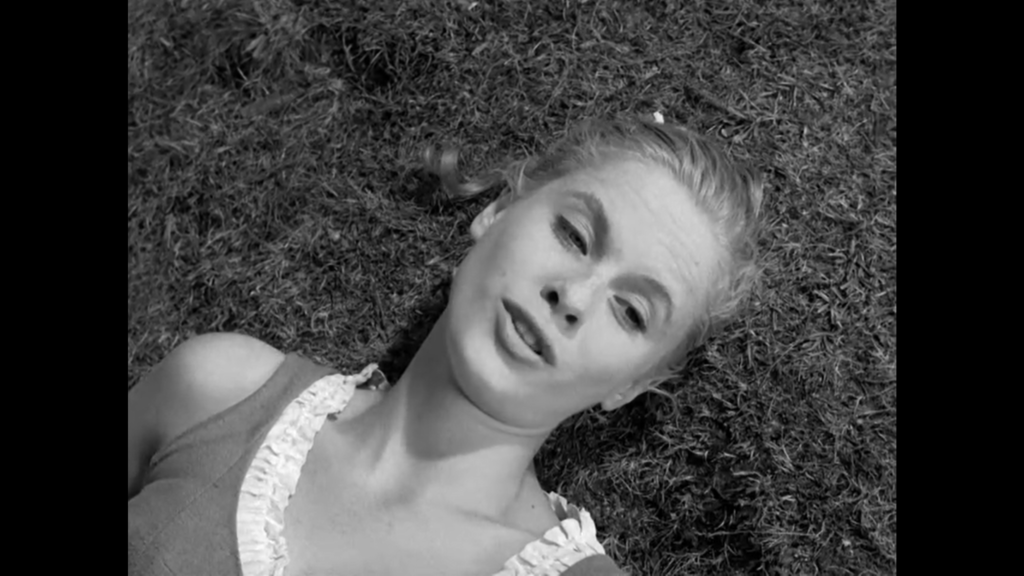
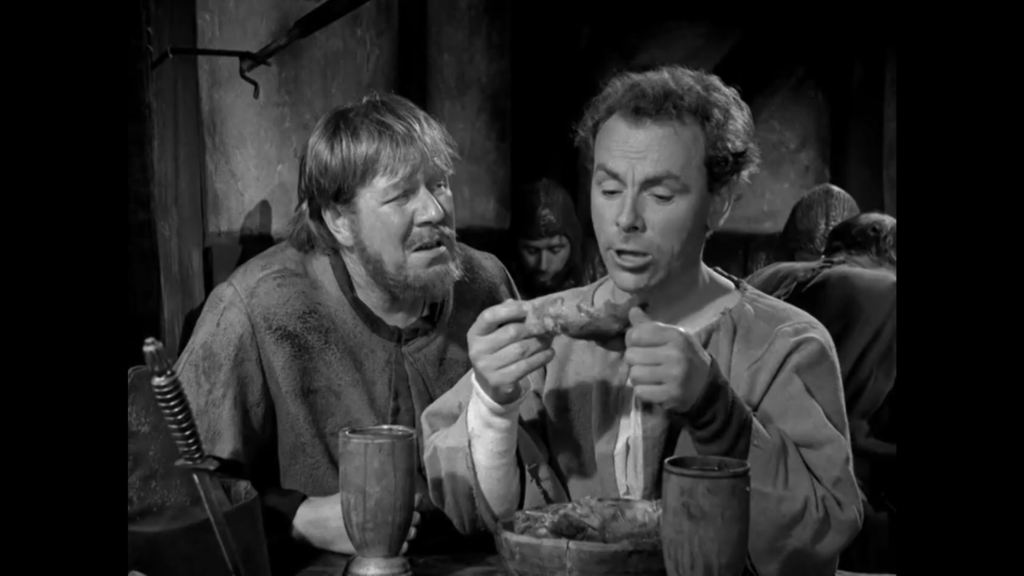
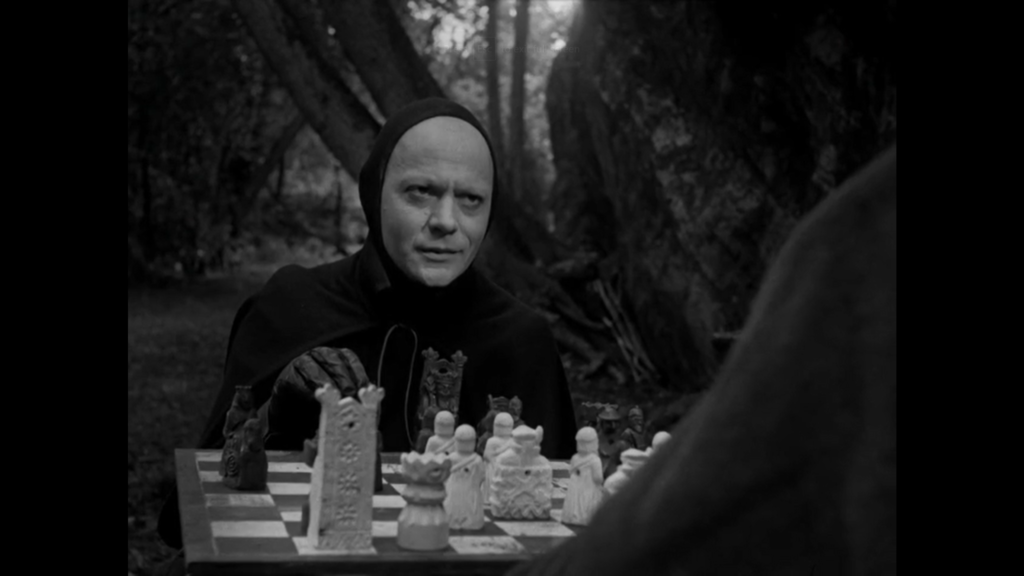
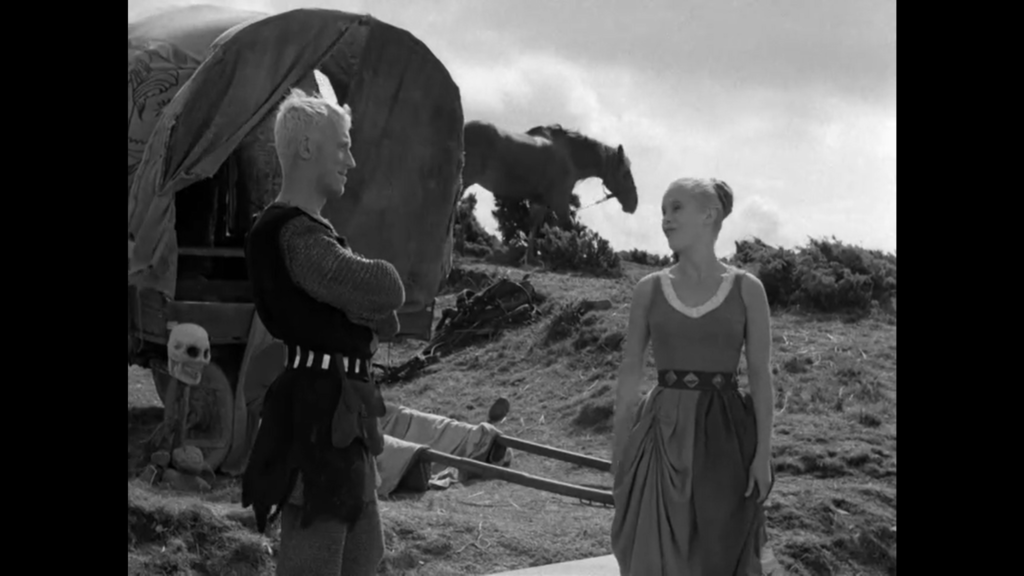

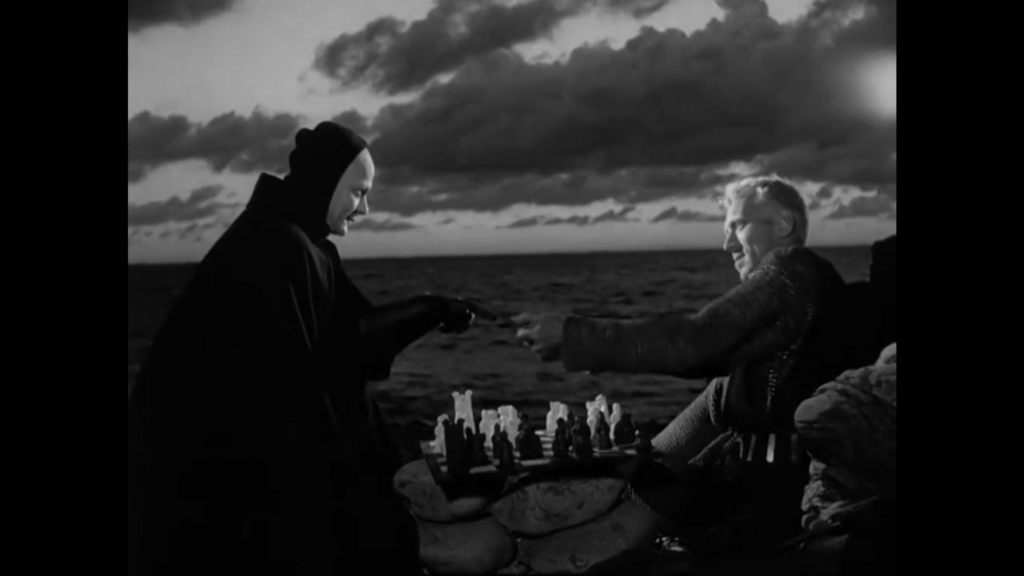
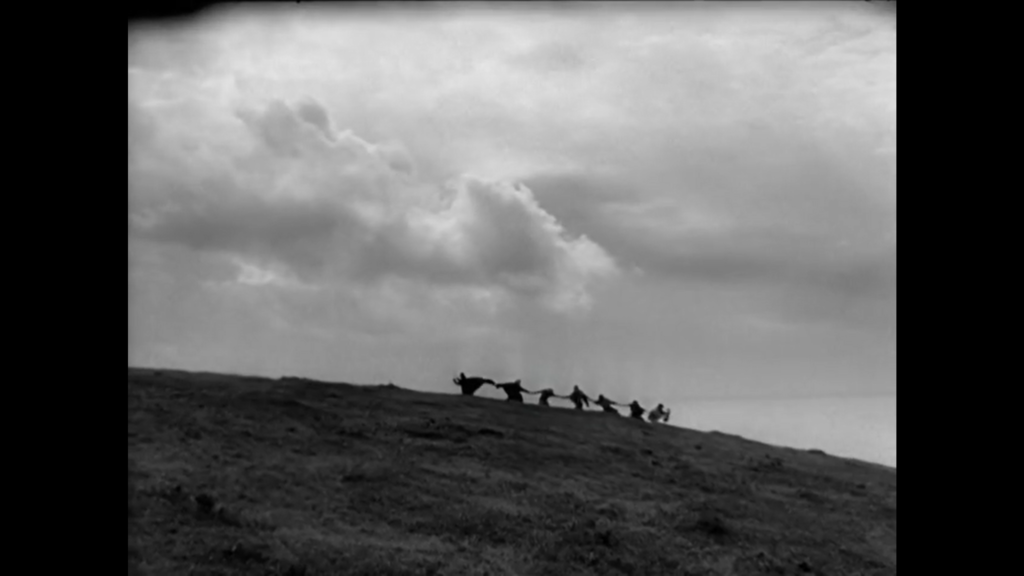
2 thoughts on “Seventh Seal, The (1957)”
A no-brainer must-see, one that holds up well on repeat viewings. As I’ve just discovered, this film can hold considerable punch if / when a long time has passed between viewings. It remains fresh.
It’s… unsurprising… that certain films from decades prior (such as this one) can speak so eloquently and powerfully to a contemporary audience. Events in life are cyclical. The same things happen time and again – as events, they’re just given different names.
‘TSS’ is not at all a plot-centered film. It is a well-researched document of the kind of specific experience that speaks to mankind-as-one. Its focus is on what makes us all alike in a time of crisis at its most extreme.
As such, it is a perfectly realized fusion of concept, writing, production design, photography, music, acting and direction. Basically, it’s a perfect film.
Absolutely a must see, and it frequently makes critics’ circle lists for all-time great movies. Bergman was a master by the time he got the chance to make The Seventh Seal. And it WAS a chance, because if it wasn’t for the success of Smiles of a Summer Night just before, the movie might not have been made, or at least could have been a very different film at a later time. As it was, according to Bergman in his book Images: My Life in Film, it was a hard sell to get it produced even with that success.
And it was a work by an artist that was intent on taking risks here. The kinds of touches he added in TSS that blur fantasy and reality give us an early taste of what he would explore in his later works. Think Wild Strawberries, Persona, Hour of the Wolf as a few examples.
Peary’s review of The Seventh Seal is enthusiastic but deconstructs the movie a little too much with an air of finality and he projects his own conclusions about the film in place of Bergman’s or the lack thereof at times. For instance, Peary writes about the ending:
“…is a semi-optimistic ending to a pessimistic film by a frustrated modern man who realizes that, since we will never have the absolute knowledge that Von Sydow desires about the existence or non-existence of God, life can be satisfying and safe only for those simple people who have faith, no questions asked.”
That’s presumptuous. I want to avoid spoilers, but there are enough disparate fantasies seamlessly interwoven, comedy and joy mixed with sadness, that I don’t waste a lot of time reading too much into any one story element or even all of them taken together. Bergman created a masterful intuitive experience here that can wash over you. It’s not necessary to grind too much on it.
Bergman isn’t reconciling anything or rendering any final opinion about satisfaction and safety in life found in “simple people who have faith.” To conclude that is to oversimplify. Here is an excerpt of what he wrote about The Seventh Seal in Images:
“Since at the time I was still very much in a quandary over religious faith, I placed my two opposing beliefs side by side, allowing each to state its case in its own way. In this manner, a virtual cease-fire could exist between my childhood piety and my newfound harsh rationalism. Thus there are no neurotic complications between the knight and his vassals.
Also, I infused the characters of Jof and Mia with something that was very important to me: the concept of the holiness of the human being. If you peel off the layers of various theologies, the holy always remains.
I also added a playful friendliness to the family picture. The child brings about the miracle, and the juggler’s eighth ball stands in the air for one breathtaking moment, a microsecond.” (pp. 235-236)